Few books in the history of Islamic mysticism and occultism have generated as much intrigue, controversy, and fascination as Shams al-Ma’arif (شمس المعارف الكبرى), often translated as The Book of the Sun of Knowledge. Written by the 13th-century Islamic scholar, mystic, and Sufi master Ahmad ibn Ali al-Buni (احمد بن علي البوني), this work is both revered and condemned, depending on the perspective of its readers.
While for some, Shams al-Ma’arif is regarded as one of the most comprehensive grimoires of the Arabic world, offering profound insights into spiritual practices, talismans, astrology, and numerology, for others, it is seen as a dangerous and heretical text that transgresses the boundaries of acceptable Islamic theology. The book’s content dives deep into the esoteric, blending Islamic mysticism with pre-Islamic magical traditions and occult practices. As a result, this work has been both celebrated by mystics and occultists and vilified by orthodox Islamic scholars.
This article offers an in-depth exploration of Shams al-Ma’arif, examining its origins, structure, and content, as well as its historical significance, influence on various esoteric traditions, and the controversies that surround it.
Ahmad ibn Ali al-Buni: The Mystic Behind the Text
To fully appreciate the significance of Shams al-Ma’arif, it is essential to first understand its author, Ahmad ibn Ali al-Buni. Born in the city of Būna (modern-day Annaba, Algeria) during the late 12th century, al-Buni lived during a time of great intellectual and spiritual flourishing in the Muslim world. His life spanned across the 12th and 13th centuries, a period when Islamic scholarship reached its zenith, and various disciplines—including theology, philosophy, science, and mysticism—were in constant dialogue.
Al-Buni was a polymath, well-versed in mathematics, astrology, and numerology, but he is most known for his contributions to Islamic mysticism and esotericism. As a Sufi master, al-Buni’s teachings were deeply rooted in the spiritual traditions of Sufism, the mystical branch of Islam that emphasizes the inner, experiential dimension of the faith. However, his work extended beyond conventional Sufi practices, incorporating elements of occultism, magic, and talismanic sciences—fields that earned him both followers and detractors.
Among al-Buni’s many written works, Shams al-Ma’arif stands out as his magnum opus. In this text, al-Buni combines his knowledge of the asma al-husna (the 99 names of Allah), numerology, astrology, and ancient magical practices to create a system of spiritual and magical operations. His writings reveal a deep understanding of the relationship between the material and spiritual worlds, and the ways in which divine names and celestial influences can be harnessed for both spiritual elevation and practical purposes.
Despite his contributions to Islamic esotericism, al-Buni remains a controversial figure. While some Sufi orders revere him as a master of hidden knowledge, many orthodox scholars have condemned his works, particularly Shams al-Ma’arif, as promoting practices that border on sorcery and shirk (associating partners with Allah). This tension between mysticism and orthodoxy has shaped the reception of al-Buni’s work throughout history.

The original manuscript of Shams al-Ma’arif (شمس المعارف الكبرى)
The original manuscript of Shams al-Ma’arif (شمس المعارف الكبرى) by Ahmad ibn Ali al-Buni does not have a single “original” copy housed in one specific location. Instead, there are several manuscripts and printed editions that exist in various libraries and private collections around the world.
Here are some key points about the availability of the book:
- Manuscripts in Libraries:
Some of the oldest known manuscripts of Shams al-Ma’arif are preserved in major libraries in the Middle East, Europe, and beyond. For example, institutions like the Bibliothèque nationale de France (BnF) and the British Library are known to house important Islamic manuscripts, including occult texts like Shams al-Ma’arif. - Printed Editions:
Over the centuries, various versions and editions of the book have been printed, particularly in the Middle East. Some of these editions are based on older manuscripts, while others have been edited or altered. These printed versions are more widely available, though they vary in terms of completeness and accuracy. - Online Access:
Digital scans of some manuscripts are available through online platforms such as the Qatar Digital Library, which provides access to a range of Islamic manuscripts. Additionally, various websites offer modern reprints or digital downloads of the text, though the quality and reliability of these versions can vary. - Private Collections:
Due to the book’s controversial nature, many private collectors and occult enthusiasts possess copies of Shams al-Ma’arif. These copies could be original manuscripts or later reprints, and their authenticity can range from highly reliable to questionable.
It’s important to note that Shams al-Ma’arif has been subject to censorship in some countries due to its association with magic and occult practices, which some Islamic scholars consider unorthodox or heretical. Therefore, finding a complete and unaltered version can be challenging.
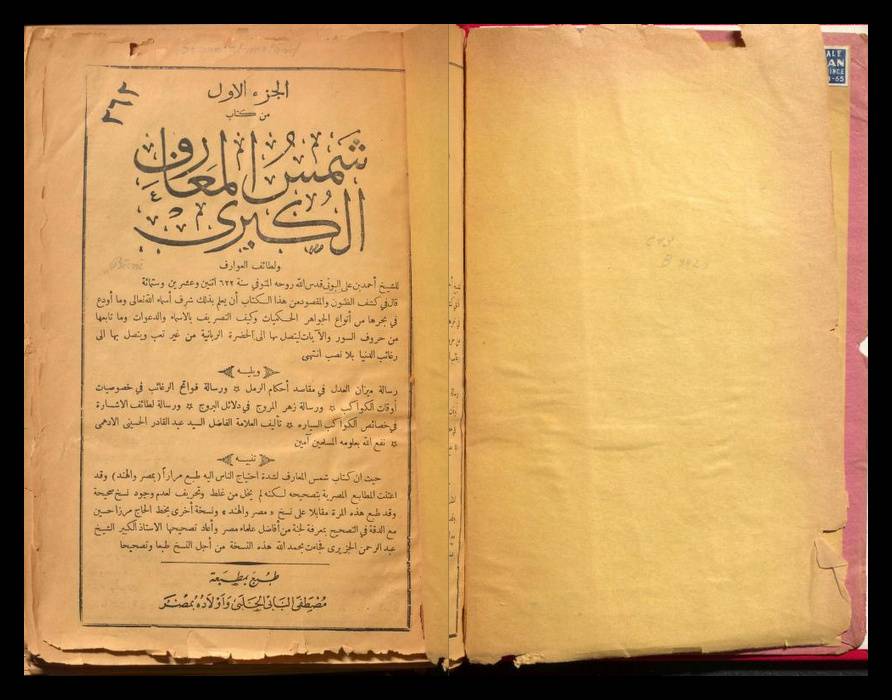
The Structure of Shams al-Ma’arif
The full title of the book is Shams al-Ma’arif wal-Lata’if (شمس المعارف ولطائف العوارف), which can be translated as “The Sun of Knowledge and the Subtleties of Awareness.” The text is expansive, comprising several volumes—though many modern editions divide it into four main sections. Over the centuries, numerous versions and copies of the text have circulated, with scribes and publishers often altering, omitting, or adding to the content. As a result, no single, definitive version of Shams al-Ma’arif exists, and the book’s structure can vary significantly between editions.
The book is dense and complex, filled with a combination of prose, diagrams, astrological charts, magic squares, talismans, and cryptic symbols. It covers a wide range of topics, including but not limited to:
- Astrology: Detailed instructions on how to calculate auspicious times for various magical operations based on the positions of celestial bodies.
- Talismans and Amulets: Guidelines on crafting talismans and amulets for protection, love, prosperity, and other purposes.
- Invocation of Spirits: Rituals for summoning angels, jinn, and other spiritual entities.
- Numerology: The mystical use of numbers and letters, often linked to the names of Allah, to create magical formulas and squares.
- Magic Squares: Grids of numbers arranged in such a way that they possess specific esoteric and magical properties.
Each section is packed with intricate details and instructions, often presented in a symbolic language that requires significant background knowledge to fully understand. Throughout the book, al-Buni emphasizes the importance of purification, both spiritual and physical, before engaging in these practices. He also stresses the necessity of adhering to Islamic principles when performing magical operations, though this has done little to quell the concerns of his critics.
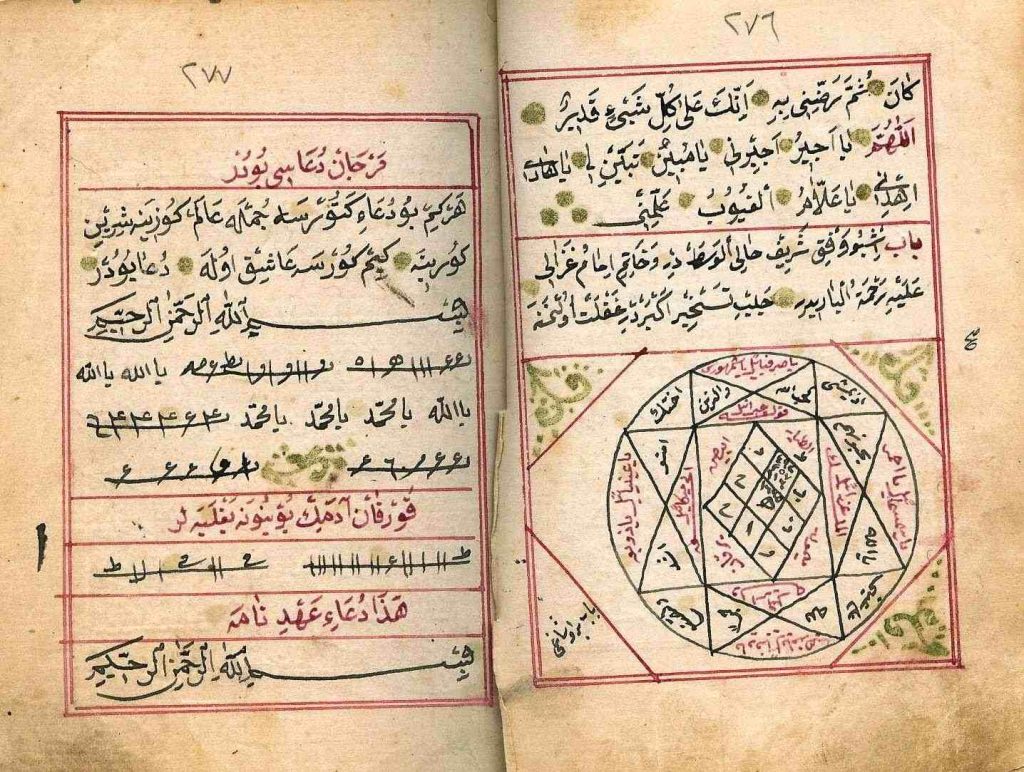
The Contents of Shams al-Ma’arif: A Closer Look
The content of Shams al-Ma’arif is as diverse as it is esoteric, blending Islamic spirituality with magical practices in a way that is unique in the Islamic tradition. Below, we will explore some of the key topics covered in the book, providing a detailed overview of its teachings on magic squares, talismans, astrology, and spirit invocation.
1. Magic Squares and Their Uses
One of the most distinctive features of Shams al-Ma’arif is the frequent use of magic squares (مربعات سحرية). A magic square is a grid of numbers arranged in such a way that the sum of the numbers in each row, column, and diagonal is the same. These squares are believed to have powerful magical properties and are often incorporated into talismans, amulets, and other forms of magical practice.
In Shams al-Ma’arif, magic squares are used for a variety of purposes, from invoking spiritual entities to protecting the user from harm. Each square is constructed using complex numerological formulas, often based on the asma al-husna (the 99 names of Allah) or other divine attributes. The creation of these squares requires both mathematical precision and spiritual knowledge, and they are often accompanied by specific prayers or invocations.
One of the most famous magic squares in the book is the Satr al-Jaljaluti, a powerful square used for protection and the invocation of spiritual beings. The square is composed of numbers that correspond to specific letters and divine names, and it is said to be particularly effective in warding off evil spirits or jinn. Other squares in the book are designed to attract wealth, love, or success, while some are used for more esoteric purposes, such as gaining knowledge of hidden truths or achieving spiritual enlightenment.
The use of magic squares in Shams al-Ma’arif reflects the broader Islamic tradition of ilm al-huruf (the science of letters), which holds that letters and numbers possess inherent spiritual and mystical properties. In this system, each letter and number corresponds to a specific divine attribute, and by arranging them in the proper way, one can tap into the underlying spiritual forces that govern the universe.
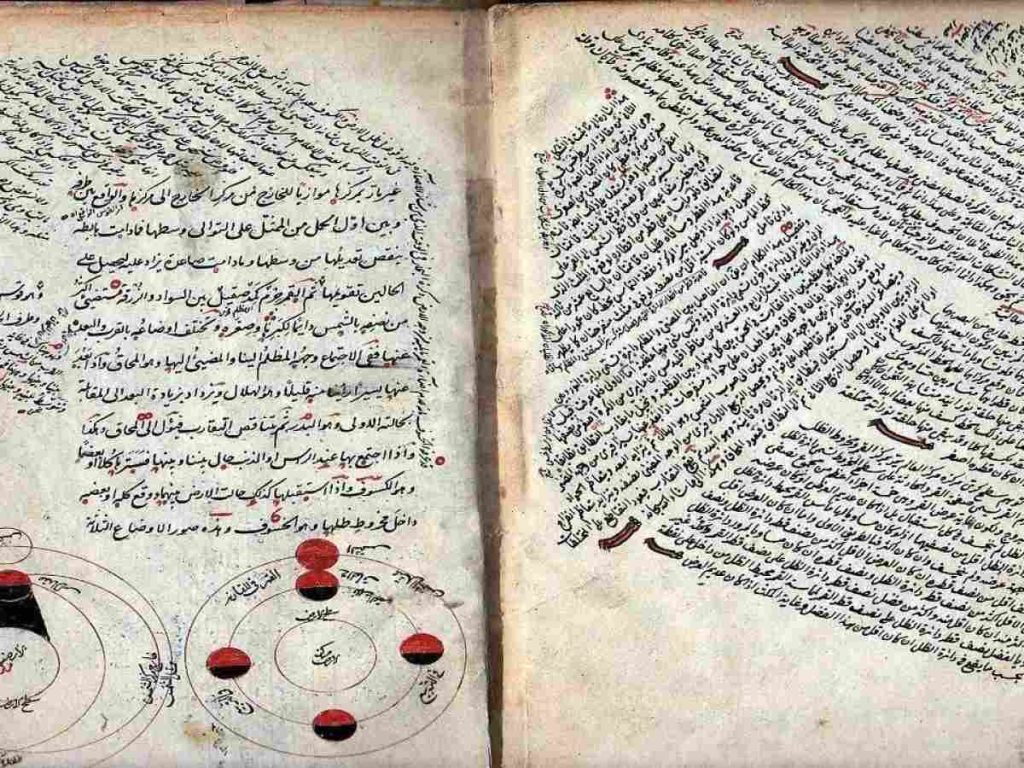
2. Talismans and Amulets
Another central theme in Shams al-Ma’arif is the creation and use of talismans and amulets. These are physical objects inscribed with magical symbols, prayers, or formulas, which are believed to provide protection, attract blessings, or influence events in the material world. The book provides detailed instructions on how to craft these talismans, including the materials to use, the time and method of their creation, and the specific prayers or rituals that must be recited during the process.
In many cases, the talismans described in Shams al-Ma’arif are designed for protection against negative forces, such as evil spirits, jinn, or the ayn (the evil eye). Others are intended to attract positive influences, such as love, wealth, or good fortune. Some talismans are crafted for more specific purposes, such as healing illness, finding lost items, or ensuring success in business or travel.
The creation of these talismans is often tied to specific astrological and numerological calculations. For example, the practitioner may be instructed to create a talisman during a particular lunar phase or when certain planets are in favorable alignments. In addition, the use of divine names is a recurring theme in the construction of talismans. By invoking the names of Allah or the angels, the practitioner seeks to draw down divine power into the material object, imbuing it with spiritual potency.
Talismans and amulets have a long history in Islamic tradition, and their use is deeply embedded in the folk practices of many Muslim communities. However, the talismanic practices described in Shams al-Ma’arif go beyond simple folk remedies and enter the realm of high magic, where the practitioner is expected to have a deep understanding of both spiritual and occult sciences.
3. Astrology and the Timing of Magical Operations
Astrology plays a crucial role in the magical operations described in Shams al-Ma’arif. The book emphasizes the importance of performing rituals, crafting talismans, or invoking spirits at the right time, based on the positions of the planets, stars, and moon. This is a common feature in many magical traditions, where the timing of an operation is believed to influence its success.
In Shams al-Ma’arif, al-Buni provides detailed guidelines on how to calculate the most auspicious times for different magical operations. This often involves consulting astrological charts and taking into account the positions of the seven classical planets (Sun, Moon, Mercury, Venus, Mars, Jupiter, and Saturn) as well as the lunar phases. For example, certain rituals may only be effective when performed during a waxing moon, while others may require the practitioner to wait until a specific planet is in a favorable house.
Astrology is also used in the selection of specific times for creating talismans and amulets. In some cases, the practitioner is instructed to create a talisman at a specific hour of the day, when a particular planet is said to be “ruling.” This astrological knowledge is considered an essential component of the magical system described in Shams al-Ma’arif, as it ensures that the practitioner is working in harmony with the celestial forces that govern the universe.
Astrology has a long history in the Islamic world, and many Islamic scholars—particularly those influenced by Greek and Hellenistic traditions—have incorporated it into their work. However, the use of astrology for magical purposes, as described in Shams al-Ma’arif, has been a point of contention among Islamic theologians. While some accept astrology as a legitimate science, others view its use in magic as a form of divination or sorcery, which is strictly forbidden in Islam.
4. Invocation of Spirits
Perhaps the most controversial aspect of Shams al-Ma’arif is its detailed instructions for the invocation of spirits, including angels, jinn, and other supernatural entities. The book provides specific rituals for summoning these beings, often using combinations of magic squares, talismans, and prayers. The purpose of these invocations varies—some are intended to gain knowledge or wisdom, while others are used for protection, healing, or more material concerns such as wealth, love, and power.
In Islamic tradition, the existence of jinn and angels is widely accepted. Jinn are spiritual beings created from smokeless fire, mentioned numerous times in the Qur’an, and they are believed to exist in a parallel world to humans. Angels, on the other hand, are created from light and serve as messengers of Allah. While the invocation of angels is generally considered acceptable in Islamic mysticism, the summoning of jinn is far more controversial.
The rituals for invoking spirits described in Shams al-Ma’arif often involve the recitation of specific prayers or divine names, combined with the use of talismans or magic squares. The practitioner may also be instructed to fast or perform other forms of spiritual purification before attempting to summon a spirit. Once invoked, the spirit is believed to assist the practitioner in various ways, depending on the nature of the ritual and the spirit in question.
While some Sufi practitioners view the invocation of spirits as a legitimate form of spiritual practice, rooted in the Islamic tradition of ruhaniyat (spirituality), many orthodox scholars have condemned it as a form of sorcery or black magic. The concern is that by summoning jinn or other spirits, the practitioner may be engaging in shirk—associating partners with Allah—which is considered one of the gravest sins in Islam.
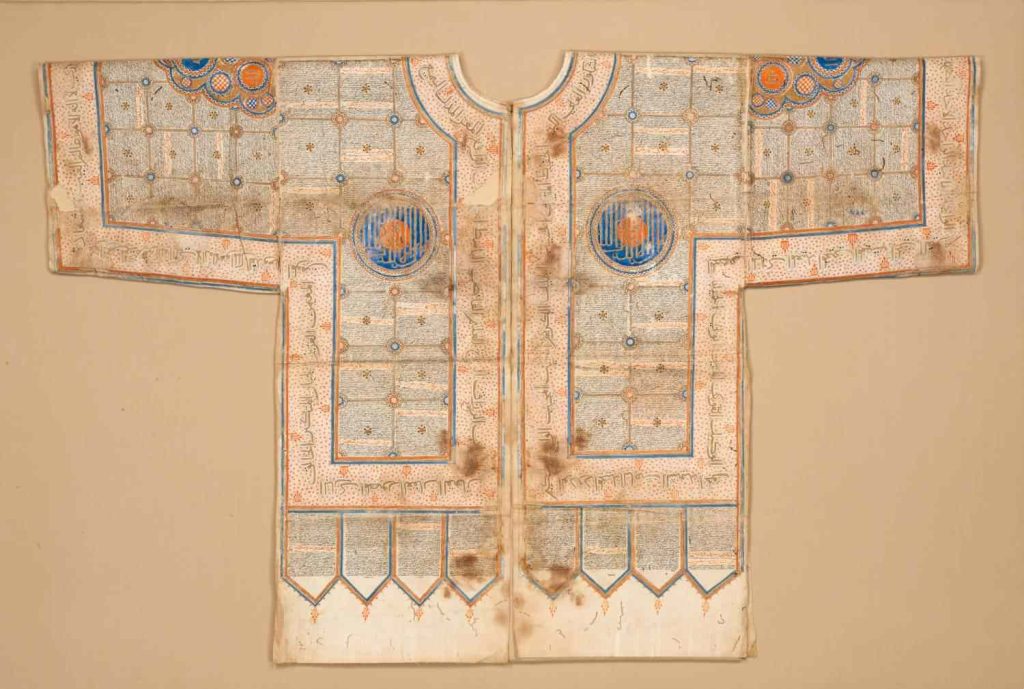
The Influence of Shams al-Ma’arif
Despite the controversies surrounding its content, Shams al-Ma’arif has had a profound and lasting influence on both Islamic mysticism and occultism. Its impact can be seen in a variety of contexts, from Sufi practices to folk magic, as well as in the broader world of esoteric and occult traditions.
1. Sufism and Islamic Mysticism
In the context of Sufism, Shams al-Ma’arif is often regarded as a work that bridges the gap between esoteric knowledge and spiritual practice. Many Sufi practitioners believe that the book contains hidden wisdom that can lead to a deeper understanding of the divine and the cosmos. The use of the asma al-husna (the 99 names of Allah) in magical operations, for example, is seen by some as a way to engage more deeply with the divine names and to harness their spiritual power.
Some Sufi orders have incorporated elements of Shams al-Ma’arif into their spiritual practices, particularly the use of prayers and invocations of the divine names. The book’s emphasis on spiritual purification, meditation, and the alignment of the practitioner with celestial forces resonates with the Sufi emphasis on inner transformation and the pursuit of spiritual knowledge through dhikr (remembrance of Allah).
However, the book’s focus on talismans, astrology, and the invocation of spirits has also made it a subject of debate within the Sufi community. While some view these practices as legitimate forms of spiritual engagement with the unseen world, others see them as distractions from the true goal of Sufism, which is to attain direct experience of the divine.

2. Occultism and Magic
In the realm of occultism, Shams al-Ma’arif is often regarded as a grimoire—a manual for performing magical operations. Its detailed instructions on the creation of talismans, the use of astrology, and the invocation of spirits have made it a valuable resource for those interested in Islamic magic and esotericism. The book’s influence extends beyond the Islamic world, as it has been studied by Western occultists and scholars of esotericism as well.
Many of the concepts found in Shams al-Ma’arif, such as magic squares and numerology, have parallels in other magical traditions, including Kabbalah and Western Hermeticism. This has led some scholars to speculate that there may have been cross-cultural exchanges of esoteric knowledge between the Islamic world and other mystical traditions. The use of letters and numbers in magic, for example, is a common theme in both Islamic and Jewish mystical traditions, and there are striking similarities between the magic squares of Shams al-Ma’arif and those found in Western grimoires.
3. Folk Practices and Popular Magic
In addition to its influence on high-level esoteric traditions, Shams al-Ma’arif has also become deeply embedded in the folk practices of many Muslim communities, particularly in North Africa and the Middle East. The use of talismans, amulets, and magical formulas from the book is common in various parts of the Islamic world, where traditional healers and practitioners of folk magic often combine Islamic prayers with occult practices to address everyday concerns such as health, love, and protection.
These folk practices often blur the line between orthodox Islam and popular magic, and they reflect a broader cultural acceptance of talismanic and amuletic practices within many Muslim societies. However, these practices are often viewed with suspicion by religious authorities, who warn against the dangers of engaging in magic and invoking spirits. This tension between popular magic and religious orthodoxy has contributed to the book’s controversial reputation
.

Controversies and Criticisms of Shams al-Ma’arif
The content of Shams al-Ma’arif has generated significant controversy throughout its history. Many Islamic scholars and religious authorities have condemned the book as heretical or even dangerous, warning that its teachings can lead believers away from the true path of Islam. The primary concerns center around its use of magic, the invocation of spirits, and the potential for practitioners to engage in shirk, or associating partners with Allah.
1. Accusations of Sorcery and Black Magic
One of the most common accusations leveled against Shams al-Ma’arif is that it promotes sorcery, which is explicitly forbidden in Islam. The Qur’an warns against engaging in magic, and the Prophet Muhammad is said to have condemned those who practice it. As a result, many scholars view the book’s instructions on talismans, magic squares, and spirit invocation as a form of sorcery that leads believers away from the true faith.
The use of magic squares and talismans, in particular, has been a point of contention. While some argue that these practices are rooted in Islamic spiritual traditions, others believe that they constitute a form of sihr (black magic), which is strictly prohibited. The invocation of spirits, especially jinn, is also seen as highly problematic, as it can lead to the practitioner forming relationships with beings that are outside the bounds of human control.
2. Shirk and Polytheism
Another major concern regarding Shams al-Ma’arif is the potential for practitioners to engage in shirk, or associating partners with Allah. The invocation of spirits, jinn, and angels, as described in the book, is seen by some as a form of idolatry, as it involves calling upon beings other than Allah for help or guidance. This is a serious offense in Islamic theology, as the central tenet of Islam is the belief in the absolute oneness of Allah.
The use of divine names in magical operations has also raised concerns about shirk. While invoking the asma al-husna is a common practice in Islamic spirituality, the use of these names in the context of magic and talismanic sciences is seen by some as an inappropriate use of sacred knowledge. Critics argue that by seeking to manipulate divine names for personal gain or worldly purposes, practitioners are engaging in a form of idolatry.
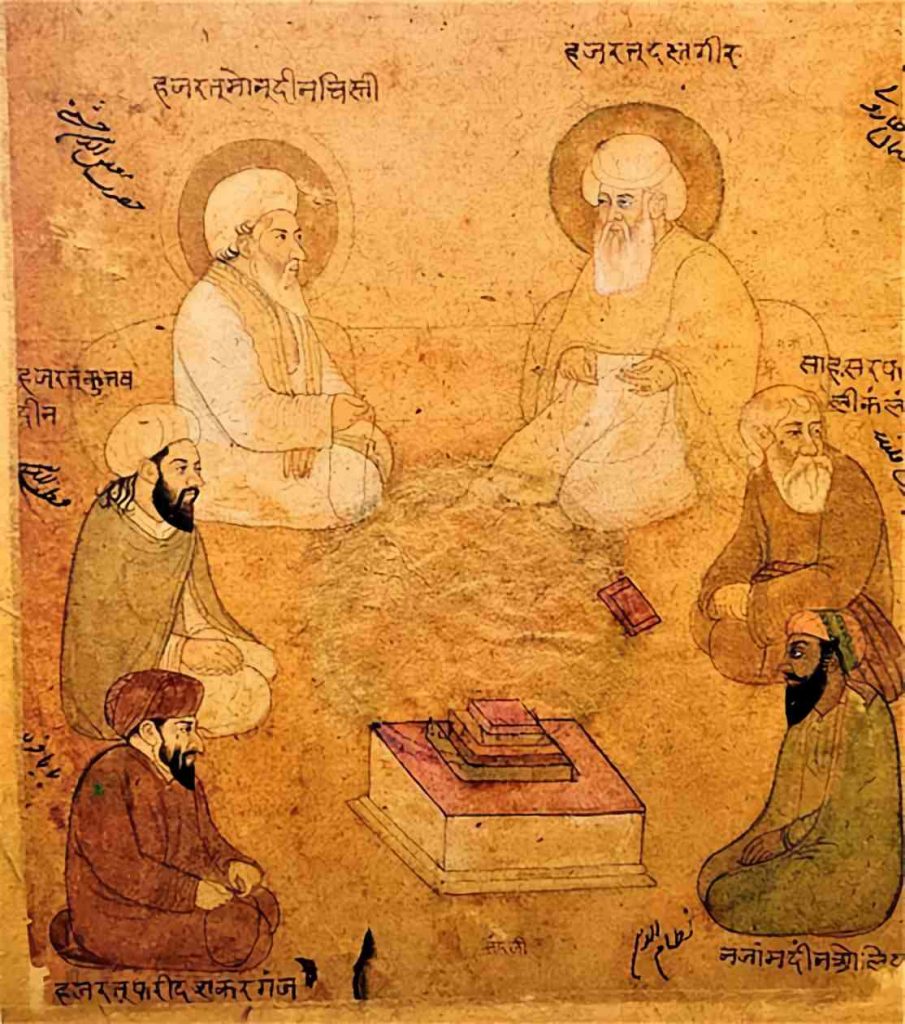
3. Banned in Many Countries
Due to these concerns, Shams al-Ma’arif has been banned in several Muslim-majority countries. Religious authorities argue that the book’s content is dangerous and can lead believers astray. The fear is that the book’s teachings on magic and spirit invocation could tempt people into forbidden practices that violate the core tenets of Islam. For example, in countries like Saudi Arabia, where there is a strict interpretation of Islamic law, the possession or distribution of Shams al-Ma’arif is illegal, and those found with it may face legal consequences.
Despite these bans, the book continues to be circulated, often clandestinely, in physical and digital formats. It remains popular among those interested in the occult and esoteric knowledge, as well as among folk healers and practitioners of traditional magic in various parts of the Islamic world. The ongoing interest in Shams al-Ma’arif testifies to its enduring appeal, even in the face of religious and legal opposition.
4. Orthodox Criticism and Debates
Orthodox Islamic scholars have been some of the harshest critics of Shams al-Ma’arif. Many argue that the book’s focus on magic, the occult, and the invocation of spiritual entities is incompatible with Islamic theology. They contend that Islam strictly prohibits seeking supernatural assistance from beings other than Allah, and that the book’s teachings could lead practitioners into shirk, a grave sin in Islam.
Additionally, some orthodox scholars believe that Shams al-Ma’arif promotes superstition, which undermines the rational and intellectual foundations of the Islamic faith. In their view, relying on talismans, magic squares, and astrological calculations for protection or success reflects a lack of trust in Allah’s power and divine will. They argue that such practices distract believers from the proper focus of worship and devotion, which should be solely directed toward Allah.
On the other hand, some scholars and mystics have defended Shams al-Ma’arif by arguing that its practices, if performed with the right intention and in accordance with Islamic principles, can be a means of drawing closer to Allah. They contend that al-Buni’s methods are not about worshipping other beings but rather about utilizing divine knowledge to unlock spiritual mysteries and enhance one’s relationship with the Creator. This debate highlights the tension between Islamic orthodoxy and mysticism, a division that has existed since the early days of Islam.
The Legacy and Influence of Shams al-Ma’arif
Despite the controversies that surround it, Shams al-Ma’arif has left a lasting legacy in various fields, ranging from Sufism and Islamic mysticism to folk magic and occult traditions. Its influence can be seen not only in the Islamic world but also in broader esoteric traditions that extend across cultural and religious boundaries.
1. Influence on Sufism and Islamic Esotericism
As one of the most significant works of Islamic esotericism, Shams al-Ma’arif has had a profound impact on certain Sufi orders and mystics. While many Sufi practitioners focus on the inner, spiritual dimensions of Islam, some have also explored the esoteric sciences described in al-Buni’s work. For these mystics, Shams al-Ma’arif offers a way to access hidden knowledge (ghayb) and to engage more deeply with the divine mysteries.
In particular, the book’s emphasis on the asma al-husna (the 99 names of Allah) and their use in magical and spiritual practices has resonated with Sufi teachings on the power of remembrance (dhikr) and the invocation of divine names. Some Sufis believe that by meditating on and invoking these names, they can draw closer to Allah and achieve a heightened state of spiritual awareness. Shams al-Ma’arif provides a framework for using these names in conjunction with numerology, astrology, and talismanic magic, thereby offering a more structured approach to esoteric Sufism.
However, it is important to note that not all Sufis accept the teachings of Shams al-Ma’arif. Many Sufi orders reject the use of magic and talismans, viewing them as distractions from the true goal of spiritual enlightenment. For these practitioners, the emphasis should be on purifying the heart, cultivating love for Allah, and seeking union with the divine through prayer, meditation, and ethical living.
2. Impact on Folk Magic and Popular Practices
In addition to its influence on Sufism, Shams al-Ma’arif has played a significant role in the development of folk magic and popular religious practices in the Islamic world. In countries such as Morocco, Egypt, and Sudan, healers and practitioners of traditional magic often incorporate elements of the book into their work, using its talismans, prayers, and magic squares to address common concerns such as illness, protection, and love.
For many people, these practices are not seen as contradictory to their Islamic faith but rather as a natural extension of it. In these communities, the use of talismans and amulets is often viewed as a way to invoke divine protection or blessings, and the formulas found in Shams al-Ma’arif are considered powerful tools for accessing the spiritual world. The blending of Islamic prayers with magical operations reflects the syncretic nature of folk practices, where religious and cultural traditions often intersect.
However, the use of Shams al-Ma’arif in folk magic has also attracted criticism from religious authorities, who argue that these practices are superstitious and un-Islamic. In response, some folk practitioners defend their work by pointing to the book’s Islamic foundations and its emphasis on the names of Allah. They argue that as long as the practitioner maintains the proper intention and adheres to Islamic principles, the use of Shams al-Ma’arif is a legitimate form of spiritual practice.
3. Western Occultism and Cross-Cultural Influence
The influence of Shams al-Ma’arif is not limited to the Islamic world. In recent years, the book has attracted the attention of Western occultists and scholars of esotericism, who have recognized its significance as a grimoire and a source of magical knowledge. The systems of numerology, astrology, and magic squares described in Shams al-Ma’arif have parallels in other esoteric traditions, such as Jewish Kabbalah, Christian mysticism, and Western Hermeticism, leading some scholars to speculate about possible cross-cultural exchanges of esoteric knowledge.
For example, the use of letters and numbers in magical operations is a common theme in both Islamic and Jewish mystical traditions, and there are similarities between the magic squares of Shams al-Ma’arif and those found in Western grimoires. These connections have prompted some researchers to explore the possibility that Islamic mysticism and magical practices may have influenced the development of Western occult traditions during the medieval and Renaissance periods, when scholars in Europe were exposed to Arabic texts on alchemy, astrology, and magic.
In addition, Shams al-Ma’arif has been translated into several Western languages, allowing a broader audience to engage with its teachings. While these translations are often incomplete or selective, they have nonetheless contributed to the book’s reputation as a key work in the global history of magic and esotericism. Today, Shams al-Ma’arif is studied by scholars of comparative religion, occultism, and mysticism, as well as by practitioners of magic who seek to incorporate its teachings into their own spiritual practices.
The Ethical and Theological Implications of Shams al-Ma’arif
The teachings of Shams al-Ma’arif raise important ethical and theological questions about the nature of magic, spirituality, and the permissible boundaries of religious practice in Islam. These issues have been the subject of ongoing debate among scholars, mystics, and practitioners, and they continue to shape the way the book is viewed in both religious and secular contexts.
1. The Nature of Magic in Islam
One of the central questions raised by Shams al-Ma’arif is the role of magic in Islam. While the Qur’an and Hadith contain explicit prohibitions against sorcery (sihr), there is also a long tradition of Islamic scholars and mystics engaging with esoteric sciences, such as astrology, numerology, and the use of talismans. This creates a complex and sometimes contradictory relationship between Islamic theology and the practice of magic.
For some scholars, the distinction between permissible and forbidden magic lies in the practitioner’s intention and the source of their power. If a magical operation is performed with the intention of seeking divine assistance and is rooted in the names of Allah or other Islamic principles, it may be considered permissible. However, if the practitioner seeks to manipulate supernatural forces for personal gain or to harm others, the operation would be classified as sihr, a grave sin in Islam.
Shams al-Ma’arif occupies a liminal space in this debate. While the book frequently invokes the names of Allah and emphasizes the importance of spiritual purification, it also includes detailed instructions for summoning jinn and creating talismans, which some scholars view as crossing the line into forbidden magic. The ethical implications of these practices continue to be a point of contention, particularly among those who are concerned about the potential for spiritual harm or misguidance.
2. The Risk of Shirk (Polytheism)
Another key theological issue raised by Shams al-Ma’arif is the risk of shirk, or associating partners with Allah. In Islamic theology, shirk is considered the gravest sin, as it violates the fundamental principle of tawhid (the oneness of Allah). The concern is that by invoking spirits, jinn, or angels, practitioners of the magical arts may be attributing divine powers to beings other than Allah, thereby engaging in a form of idolatry.
Al-Buni’s work attempts to mitigate this concern by grounding his magical operations in the asma al-husna and other Islamic principles. However, critics argue that the very act of summoning spirits or using talismans for worldly purposes can lead practitioners into dangerous territory, where they begin to rely on supernatural forces rather than placing their trust in Allah alone.
This concern is particularly relevant in the context of folk magic, where practitioners may not always have a deep understanding of Islamic theology or the potential risks associated with certain practices. While many folk healers genuinely believe that their work is in line with Islamic principles, the line between acceptable spiritual practice and shirk can be difficult to discern, especially when dealing with the unseen world of jinn and other supernatural entities.
3. The Role of Intention and Spiritual Purification
One of the recurring themes in Shams al-Ma’arif is the importance of intention and spiritual purification when engaging in magical or esoteric practices. Al-Buni emphasizes that the practitioner must be in a state of spiritual purity, free from sinful thoughts and actions, before attempting to perform any magical operation. This reflects a broader Sufi principle that spiritual knowledge and power are only accessible to those who have undergone a process of inner purification and transformation.
For al-Buni, magic is not simply a tool for manipulating the material world; it is a means of connecting with the divine and accessing higher spiritual realities. This is why the proper use of Shams al-Ma’arif requires not only technical knowledge of magic squares, astrology, and talismans, but also a deep commitment to spiritual discipline and ethical conduct. In this sense, the book can be seen as both a grimoire and a spiritual manual, offering guidance on how to navigate the complex relationship between the material and the spiritual worlds.
However, the emphasis on intention and purification also introduces a potential ethical dilemma. If a practitioner sincerely believes that their magical work is guided by pure intentions and aligned with Islamic principles, but they inadvertently engage in practices that are considered forbidden, are they still guilty of sin? This question has been the subject of much debate among scholars and practitioners, and it highlights the complex and often ambiguous nature of Islamic esotericism.
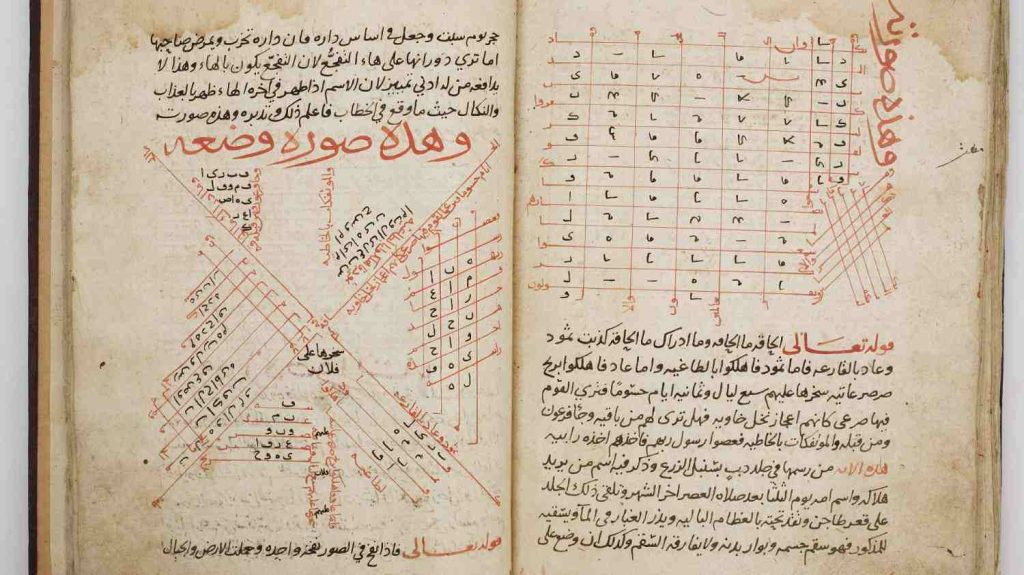
Conclusion
Shams al-Ma’arif is a text that defies easy categorization. It is a work of Islamic mysticism, a manual of magic, a treatise on astrology and numerology, and a spiritual guidebook—all at once. Its teachings have fascinated and perplexed readers for centuries, and its influence can be seen in a wide range of contexts, from Sufi mysticism to folk magic and Western occultism.
At the heart of Shams al-Ma’arif lies a profound exploration of the relationship between the material and spiritual worlds, and the ways in which divine knowledge can be harnessed for both personal and spiritual transformation. While its teachings on talismans, magic squares, and spirit invocation have made it a subject of controversy, the book continues to be studied and revered by those who seek to unlock the hidden mysteries of the universe.
The legacy of Shams al-Ma’arif is both complex and enduring. It challenges the boundaries between orthodoxy and heterodoxy, between faith and superstition, and between the permissible and the forbidden. For some, it represents a path to spiritual enlightenment and divine knowledge; for others, it is a dangerous and heretical text that leads believers astray. Regardless of one’s perspective, there is no denying the profound impact that Shams al-Ma’arif has had on Islamic esotericism, mysticism, and occultism. Its mysteries continue to captivate, and its teachings remain a source of fascination, curiosity, and debate.





